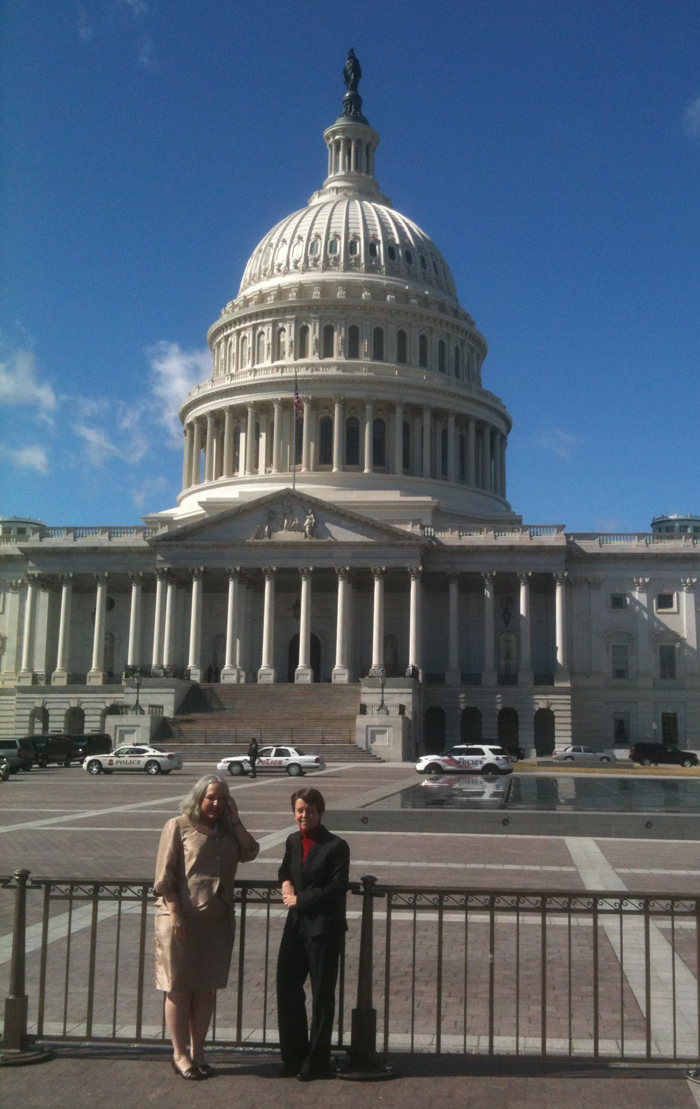
[ Archive ]

 |
ASPB and CIMSS Weekly Report
[ Archive ] |
 |
IN THE PRESS:
ITEMS FOR THE ADMINISTRATOR:
ITEMS FOR THE ASSISTANT ADMINISTRATOR:
Visit to JMA: At the invitation of
Director-General of the Japanese Meteorological Agency (JMA), Andrew
Heidinger and Mike Pavolonis (STAR) visited JMA on February 25 – March 1, 2013.
The purpose of the visit was to foster mutually beneficial
collaboration between NOAA and JMA on the next generation of
geostationary satellite observations. JMA’s next generation
geostationary weather satellite, Himawari-8, will have a very similar
imaging capability as NOAA’s next generation Geostationary Operational
Environmental Satellite (GOES-R). Himawari-8 is scheduled to be
launched prior to GOES-R. The visit involved multiple lectures and
detailed discussions on the GOES-R algorithms and how they compare to
approaches developed by EUMETSAT (European Organisation for the
Exploitation of Meteorological Satellites). JMA intends to compare and
validate the EUMETSAT and GOES-R products and decide on the final
approaches employed for Himawari 8/9. JMA will send a request to NESDIS
to obtain the appropriate source codes to allow them to generate the
NOAA products at JMA. Issues regarding access by NOAA to Himawari 8/9
data were discussed but no new information was obtained. (M. Pavolonis,
E/RA2, 608-263-9597, mpav@ssec.wisc.edu, A. Heidinger, E/RA2,
608-263-6757, andrew.heidinger@noaa.gov)
Significance: JMA's Himawari 8/9 data represents a critical data source
for NOAA. It will provide ABI-like data years before GOES-R is
launched. Ongoing collaboration with JMA is therefore important in
furthering the goals of the GOES-R program.
Mission Goals: Serve Society's Needs for Weather and Water Information;
Understand Climate Variability and Change; Support the Nation's Commerce
NOAA Cross-Cutting Priorities: Sound, Reliable State-of-the-Art Research; Integrating Global Environmental Observations and Data Management
ITEMS FOR THE OFFICE DIRECTOR, STAR:
Climate Science Day on Capitol Hill: Margaret
Mooney from the Cooperative Institute for Meteorological Satellite
Studies (CIMSS) teamed up with Betsy Weatherhead from the Cooperative
Institute for Research in the Environmental Sciences (CIRES) for a full
day of meetings on Capitol Hill on February 27th for the third annual
Climate Science Day, a non-partisan event where 50 scientists from
around the country met with members of Congress and their staffs to
discuss the current state of climate science. Participants were
recruited by several different professional societies; Mooney was
sponsored by the American Meteorological Society. Not surprisingly,
Hurricane Sandy came up in some conversations, inviting mention of the
connections between satellite data and hurricane forecasting. As
predicted by science, the Earth’s changing climate and extremes of
weather are disrupting ecosystems, infrastructure, and society. The
organizers and participants of Climate Science Day hope their efforts
will connect policy and decision makers with sound science when
responding to the impacts of climate change. (M. Mooney, CIMSS,
608-265-2123)
 (Click image to enlarge)
(Click image to enlarge)
Figure caption: Betsy Weatherhead (CIRES) & Margaret Mooney (CIMSS)
ITEMS FOR THE DIVISION CHIEF, CoRP:
National Weather Service Eastern Region Virtual Satellite Workshop: To better address Research-to-Operations and Operations-to-Research, ASPB and CIMSS participated in the Eastern Region Virtual Satellite Workshop on Tuesday, February 26, 2013. T. Schmit presented the GOES-R ABI (Advanced Baseline Imager) rapid refresh imaging capabilities. Other presentations from CIMSS covered simulated satellite imagery in NWS experiments/testbeds, improving very-short-range forecasts, using cloud top cooling rates, Suomi NPP VIIRS (Visible Infrared Imaging Radiometer Suite) satellite imagery in AWIPS, and linear optimization as a solution to improve the sky cover guess. The workshop was organzied by F. Alsheimer and D. Radall of the Eastern Region. More information is available at http://www.erh.noaa.gov/ssd/erps/satellite/. (W. Feltz, CIMSS, 608-265-6283, wayne.feltz@ssec.wisc.edu, T. Schmit, E/RA2, 608-263-0291, tim.j.schmit@noaa.gov)VISITORS:
NEXT WEEK:
LOOKING AHEAD:
| Archived Weeklies Page | Submit a report item |